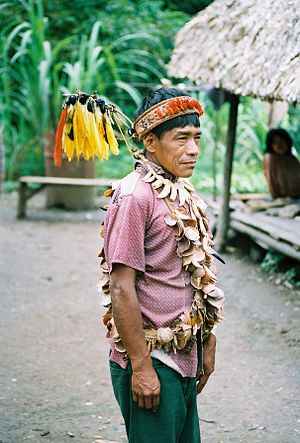I wonder how many of you have done exactly what my title says? Why? What do these other cultures have to teach us that we cannot learn from allopathic or Chinese (or even Ayurvedic) medicine, when it comes to health, or one of the major religions of the world when it comes to spirituality.
Today, I thought I’d share a little bit about some of the books I’ve read on the subject. I know a surprising number of people who have asked the questions in the first paragraph (see, for example, my friend Michael Drake’s Website on Shamanic Drumming). Some of them have left their former lives to follow a teacher, while others have spent most of their money taking courses. There must be something to these traditions to draw so many to them. One reason they are so appealing, I think, is that they do not separate physical and mental health from the spiritual. They incorporate centuries or millennia of wisdom, and a keen knowledge of the varieties of human experience. Another draw seems to be the way they rely upon primary experience, rather than knowledge gained from books and years of study. By that, I mean that they rely upon visions, upon honing the kinesthetic sense to the point that one can feel what is going on in one’s own or another’s body (see The Body has a Mind of its Own), and upon paying attention to the natural world.

But I am an outsider, because I don’t really feel compelled to study indigenous healing. I have only dabbled a little – a handful of sweat lodges, a few workshops, a few Shipibo ceremonies, and two soul retrievals. I’ve enjoyed all of these experiences (well, mostly, but that is another story), and gotten something out of them, but not enough to pursue them further. However, a couple of years ago I found myself reading about them to flesh out the shaman in my novel. And, well, I’ll admit, because I was curious. Here I want to highlight three writers who entertained me with their stories about their journeys into indigenous healing land.
I was seriously entranced by Kay Cordell Whitaker’s The Reluctant Shaman, so much so that I briefly considered trying to train with her. Then I came to my senses and realized that this is not my path. But I certainly followed up with her second book: Sacred Link. I love her story of being called to study with two shamans from Peru, and the lessons she learned about our Song and our Masks, and meeting the spirits of the water, wind, and so on. No matter what you might think about the truth of some of what happened to her, it’s hard to deny that we would all be better off if we learned what our masks are and also what gives us the greatest joy in life (for me, it’s writing). I subscribe to her blog, where she posts the sweetest advice about following our song, love, and caring for the earth.

Satsun, My Appreticeship with a Maya Healer, by Rosita Arvigo with Nadine Epstein, is also about learning from an indigenous healer. It’s knowledge that westerners might more easily relate to than Ms. Whitaker’s; although there are prayers and Spirits here, too, it focuses more on her experience learning about herbal medicine and Mayan Abdominal massage. Her story is almost the opposite of Kay Cordell Whittaker’s: instead of being chosen, and almost forced against her will to learn shamanism, she was eager to learn, but had to convince her teacher. Ms. Arvigo teaches workshops in the United States. Her book also talks a good bit about the Westernization of Belize, and the loss of many healing traditions. Ms. Arvigo convinced Don Elijio Panti to teach her, an outsider, because she wouldn’t give up, no one in his own community wanted to apprentice with him, and he wanted his tradition continued.

Taking a different, but also fascinating, path, Lewis Mehl-Madrona, M.D. details his journey through medical school and the world of residencies and clinical practice, and his growing disillusionment with some aspects of traditional western medicine in Coyote Medicine: Lessons from Native American Healing. While he was becoming an allopathic doctor, and doing residencies in a number of specialties, he was invited to a number of Native ceremonies. These led him to memories of his Cherokee grandmother, who was a healer, and into a different approach to life. Eventually, he began seeking out various indigenous healers to learn their ways and then to merge western and indigenous healing. Like Kay Cordell Whittaker, his tale is full of painful personal growth through mistakes and ego, from which he learned to be a better human being.
There are many more books to choose from, but I will stop with these three which particularly entranced me. As I write this, I realize that it was their mistakes and insights which particularly draw me to their stories. I’ve tried to get through a few how-to books on shamanism and never gotten very far. I don’t want to become an indigenous healer like my friends, just a better and happier human being. How about you?
Related articles
- The Roots of Shamanism (shamanism.wordpress.com)
- VIDEO: Hospital offers Andean treatments (bbc.co.uk)
- Shamans of the modern age (boingboing.net)